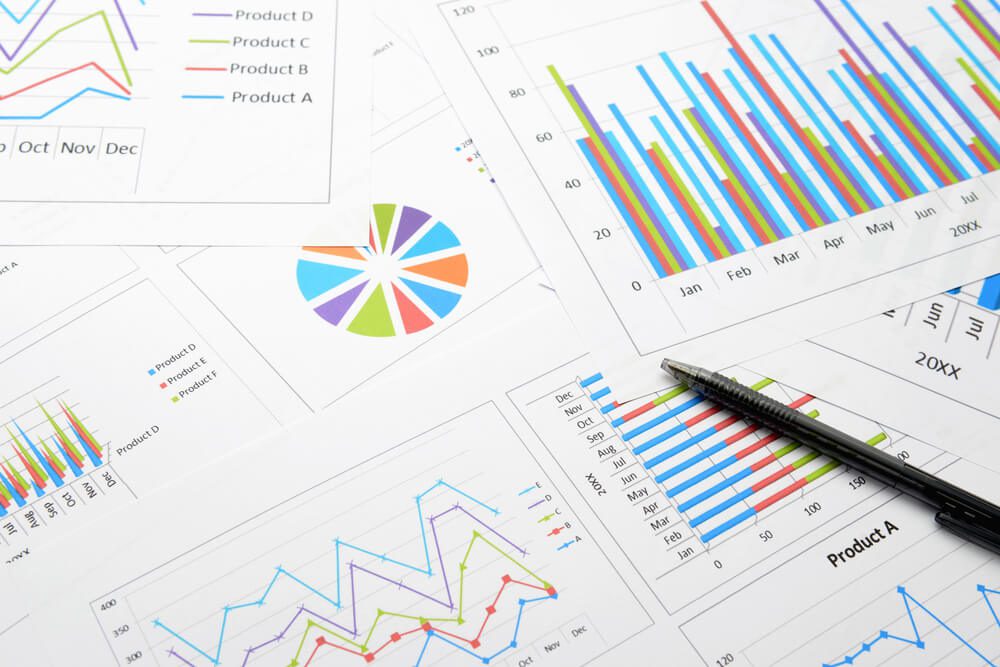
How and When To Best Use Market Analysis vs Analytics
Marketing analytics uses data to evaluate marketing activities' effectiveness or success. Meanwhile, marketing analysis involves a detailed assessment of the target audience as well as the competitiveness of an industry.
Analysis and analytics overlap when marketers utilize data-driven approaches to examine marketing performance and consumer behavior when making informed decisions. Both are critical in creating marketing strategies for improved outcomes and return on investment (ROI).
A San Diego analytics agency can help you decide:
- How and when to use market analysis,
- How and when to use market analytics, and
- Which is the best one for your business.
Are you looking for a full-service digital marketing agency? See the DAP difference below!
How and When To Use Market Analysis

A market analysis looks into the current market situation, particularly the following:
- Market size and growth trends
- Competitor analysis, including market share and pricing strategies
- Customer preferences and behavior
- Demographic data, such as age, gender, income, and location
- Economic and industry trends
- Regulatory and legal factors
The information you gather from a market analysis helps in the situations below.
1. When Entering a Market
No one should go unprepared when trying to break into San Diego's thriving business community. One must understand the target market, customer needs, competition, and potential barriers to entry. That makes a comprehensive market analysis very critical.
With market analysis, companies can make better and more informed decisions about feasibility, positioning, and competitive strategies. Businesses can better predict the success of new offerings by keeping tabs on market trends.
2. When Engaging in Strategic Planning
Say a local restaurant's market analysis showed that San Diego's tourism industry is booming. 32 million people visited "America's Finest City," in the last year and brought $22 billion with them.
Partnering with local hospitality businesses to offer attractive packages and immersive experiences to a steady stream of tourists would be a viable strategy to increase exposure and revenue potential for this restaurant. Of course, further data can help refine the strategy.
That is how market analysis provides invaluable insights for strategic planning, enabling businesses to identify growth opportunities, understand customer behavior, and make informed decisions about market segmentation, target audience selection, and positioning.
3. When Developing New Products
When businesses develop new products or expand their portfolio, they use analysis to validate product ideas, identify gaps or underserved segments, and assess demand.
Market analysis guides product development decisions. Companies use analysis to determine pricing strategies and messaging to ensure alignment with customer needs and trends.
4. When Creating New Marketing Campaigns
Market analysis is valuable for designing effective marketing campaigns. It helps businesses understand customer preferences, target audience characteristics, and the most appropriate channels to reach their target market.
With an analysis, businesses can tailor their messaging, offers, and promotional strategies to resonate with the audience and maximize campaign effectiveness.
5. When Performing Competitive Analysis
Market analysis plays a crucial role in assessing and responding to competition. It helps companies understand their competitors' strengths, weaknesses, market positioning, and pricing strategies. Competitive analysis can reveal areas of differentiation, opportunities to outperform competitors, and business threats.
Back to the restaurant example above: Let us say that its market analysis revealed that no other local restaurant has partnered with hotels and other attractions for tourist packages. Then its attempt to do so would be a good way to differentiate itself from competitors, not to mention a strong opportunity to outperform them.
6. When Providing Ongoing Market Analysis
Market analysis is an ongoing process. Businesses must regularly monitor market trends, consumer behavior, and competitive dynamics to stay updated on changes in the market, identify emerging opportunities, and adjust their strategies accordingly.
Companies should proactively and regularly perform marketing analysis to inform business decisions, guide strategy formulation, and ensure alignment with market conditions. Through a thorough understanding of the landscape, customer needs, and competitive dynamics, they can make informed decisions that promote advantage and drive business growth.
How and When To Use Market Analytics

Analytics entails gathering data from visualization software, statistical analysis software, or machine learning algorithms to gain insights into business performance and customer behavior. The following types of data are typically used in analytics:
- Sales data, including revenue, profit margins, and customer acquisition rates
- Customer data, such as demographics, behavior, and preferences
- Website and social media analytics, including traffic, engagement, and conversion rates
- Operational data such as production and supply chain metrics
- Financial data, such as cash flow and ROI
Analytics is ideal in the following situations:
1. When Making Data-Driven Decisions
Market analytics informs the decision-making processes across various functions, helping businesses create effective strategies to ensure their best efforts. What does it mean for a San Diego pediatric dental clinic's website if it discovers that it has a high bounce rate and that most traffic comes from a distant city?
Such data signals that this clinic should perform a site audit. For example, it should check the keywords used because it might target keywords that its local San Diego market does not use when looking for dental clinics. Checking the site performance is also important, especially the site loading time, because it could be one reason visitors are leaving.
Once issues are identified, they can apply changes accordingly. Indeed, with market analytics, companies can make informed decisions backed by data and insights.
2. When Providing Performance Evaluation
Through market analytics, businesses can measure and evaluate the performance of their marketing initiatives, campaigns, and channels. They analyze key metrics such as conversion rates, customer acquisition costs, and return on investment (ROI); businesses can assess the effectiveness of their efforts and identify any areas that need improvement.
With the same clinic discussed above, if its ads get clicks but users do not convert once they reach the website’s landing pages, it is time to check the landing page because it might not align with the ad or is not intuitive enough.
3. When Segmenting and Personalizing Customers
Analytics identifies customer segments according to demographics, behaviors, and preferences. By using analytics, businesses can create marketing messages, offers, and experiences for specific customer segments. This enhances engagement and dramatically improves customer satisfaction.
A San Diego beachfront resort can use analytics to segment customers based on their booking history, interests, and preferences. With this data, they create personalized vacation packages, targeted promotions, and customized experiences, catering to each guest's individual preferences, resulting in heightened satisfaction and loyalty.
4. When Performing Competitive Analysis
Businesses use analytics to help them with competitive analysis. Analytics provides insights into competitors' strategies, market positioning, and customer perceptions, which can make analysis significantly more efficient.
Through analytics, businesses can identify competitive advantages, benchmark their performance, and make better decisions that increase their competitiveness.
5. When Forecasting and Planning
Market analytics helps companies forecast trends, demand patterns, and customer behavior. They use statistical models and data analysis techniques to anticipate changes, make accurate sales forecasts, and develop effective strategies that lead to future growth.
6. When Engaging in Ongoing Market Monitoring
Market analytics is not a one-time activity; companies must continuously monitor and track market dynamics. By regularly analyzing market data and performance metrics, companies remain agile, adapt to changes, and can adjust their strategies and tactics promptly.
Businesses should integrate market analytics into various business processes and use it as an ongoing practice. Companies can gain insights, make data-driven decisions, and optimize their strategies using market analytics.
Summing Up: Best Use Analysis vs. Analytics
Both market analysis and market analytics are valuable, but they serve different purposes and provide distinct insights. Instead of considering them separately, use them together to understand the market landscape. Analyze market conditions and customer behavior, then use market analytics to capitalize on forecasts, trends, and strategy optimization.
The combination of market analysis and analytics helps businesses make informed decisions, align their strategies with market dynamics, and achieve business growth. Find out how an expert San Diego analytics agency can help you with analytics and analysis of your market. Contact Digital Authority Partners (DAP) today.
Want To Meet Our Expert Team?
Book a meeting directly here




